6 Best Barbell Bicep Exercises (with Pictures!)
Nearly every lifter is familiar with the classic dumbbell curl, but few are actually seen replicating the movement with the use of a barbell instead - an unfortunate choice, as barbell-based exercises can offer benefits that are difficult to replicate with other types of equipment.
Barbell-based bicep exercises are considerably useful for lifters looking to build strength and size in their arms, as they can allow for a greater loading capacity and more efficient movement pattern.
Movements like the EZ-bar curl and reverse barbell curl are just two of the many barbell bicep isolation exercises that may be added to a lifter’s workout plan - all of which will help maximize the growth of their arms and provide a more well-rounded training session as a whole.
What are Barbell Bicep Exercises?
Barbell bicep exercises are a form of arm training movement featuring bilateral recruitment of the biceps brachii, usually with a low to moderate amount of weight and high volume of repetitions. The sort of equipment used can range from a standard empty straight barbell to specially-created curl bars and a set of low increment weight plates.
They primarily feature elbow flexion - hence the term curl - and are usually performed with the hands in a supinated grip, though some may feature a neutral or pronated grip instead.
Biceps Anatomy and Biomechanics
The biceps brachii is a two-headed muscle group located at the anterior section of the humerus, with the short or inner head being closer to the midline while the long or outer head is on the lateral side of the upper arm.
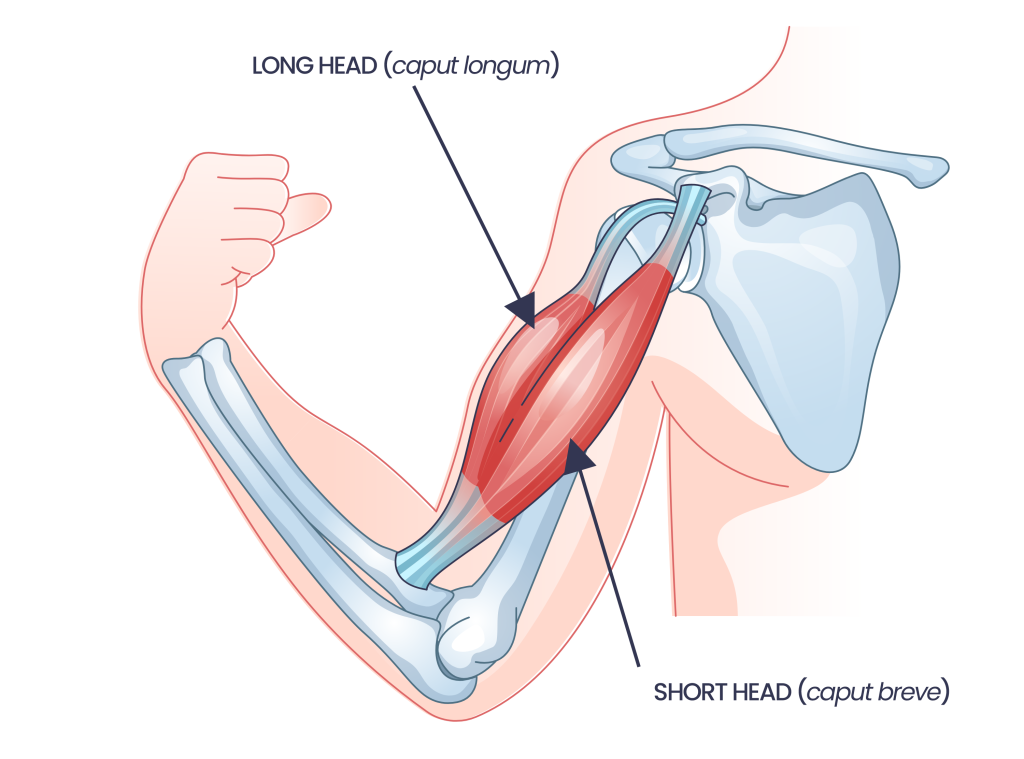
Working in tandem with several other muscles, the biceps brachii is responsible for flexion of the elbow (bending), as well as flexion and supination of the forearm in its entirety.
The biceps will also contribute to the stability of certain other movements, such as overhead arm extension or elbow extension.
Advantages of Training the Biceps with Barbells
Unlike training the biceps with dumbbells or machines, training them with a barbell allows for effective and intense bilateral contraction - saving the lifter time and allowing them to lift far more than they would be able to with each arm working on their own.
This creates a greater level of resistance within the workout, which leads to greater strength development and better training stimulus overall.
1. The Straight Barbell Bicep Curl
The barbell bicep curl is the quintessential bilateral curl exercise, featuring much the same movement pattern and mechanics as unilateral bicep curls, though with a slightly shorter range of motion due to the abdomen blocking the bar.
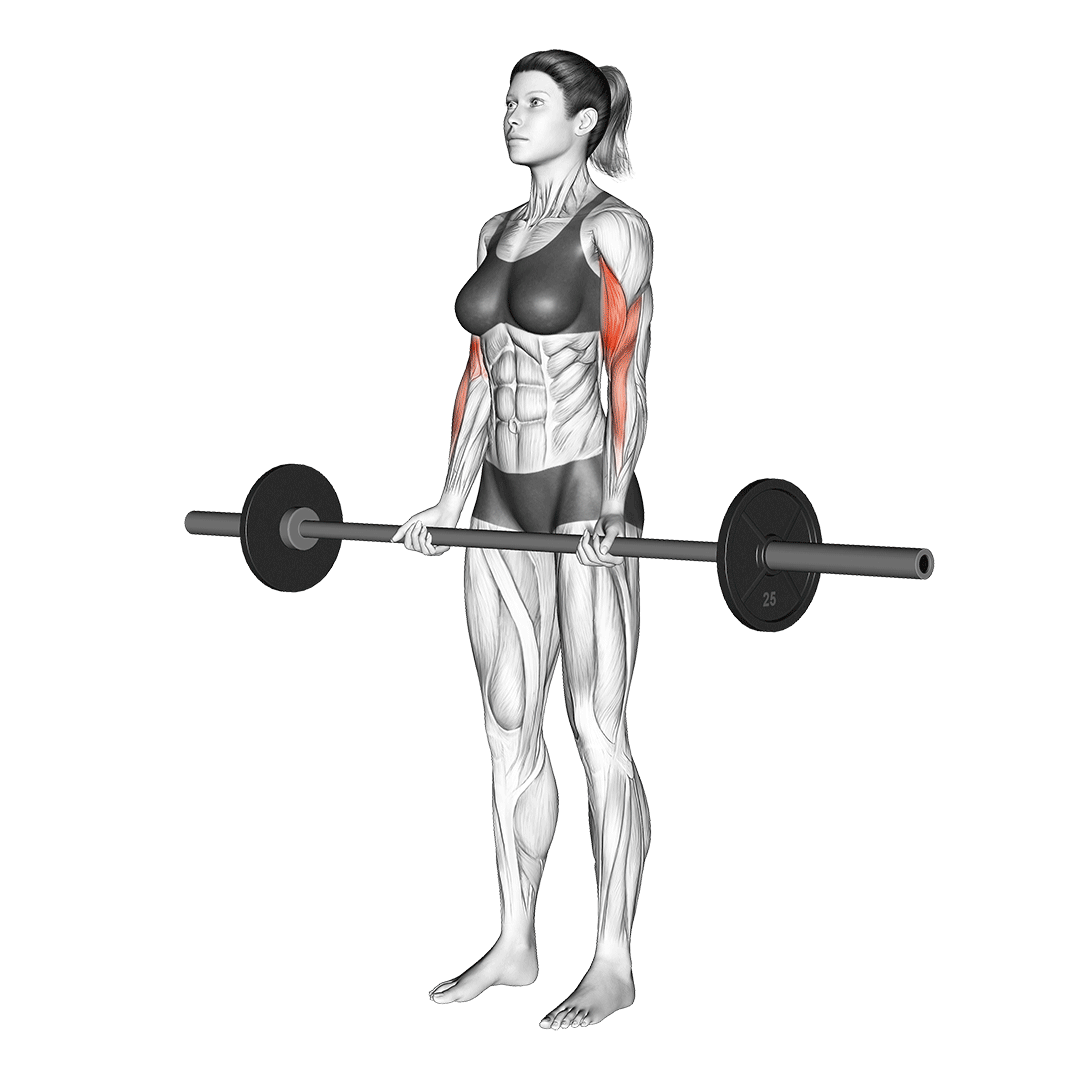
In technical terms, the barbell bicep curl is a single-joint isolation exercise solely meant for the purpose of improving the size and strength of both biceps brachii simultaneously.
It is arguably the most simple and convenient of the barbell-based bicep exercises, though some lifters may wish to avoid it due to pain in the forearms or wrists.
Benefits of the Straight Bar Barbell Curl
The barbell bicep curl is a no-brainer bicep exercise that will work not only the biceps, but also the brachialis and parts of the forearms.
Due the shape of the barbell and the fact that the exercise is bilateral, the barbell bicep curl may be performed with somewhat more weight than a dumbbell or kettlebell bicep curl, allowing for greater loading and therefore better strength gains.
Equipment Used
The barbell bicep curl requires a straight barbell and set of weight plates; Barbell collars may also be useful.
Important Points
The barbell bicep curl is as simple as it gets for barbell-based bicep exercises - it requires no unusual equipment or advanced exercise understanding.
The target of the exercise may be modified somewhat by placing the hands closer or farther apart, with a wider grip allowing for the exercise to place greater emphasis on the inner portion of the biceps, whereas a more narrow grip will target the outer portion of the biceps.
Furthermore, lifters with poor lower body mobility or a history of back injuries may wish to perform this exercise from a rack, as the barbell will need to be deadlifted from the floor when beginning a set.
2. The EZ-Bar Bicep Curl
For lifters who find the straight barbell curl to be uncomfortable, the EZ-bar curl is the perfect solution.
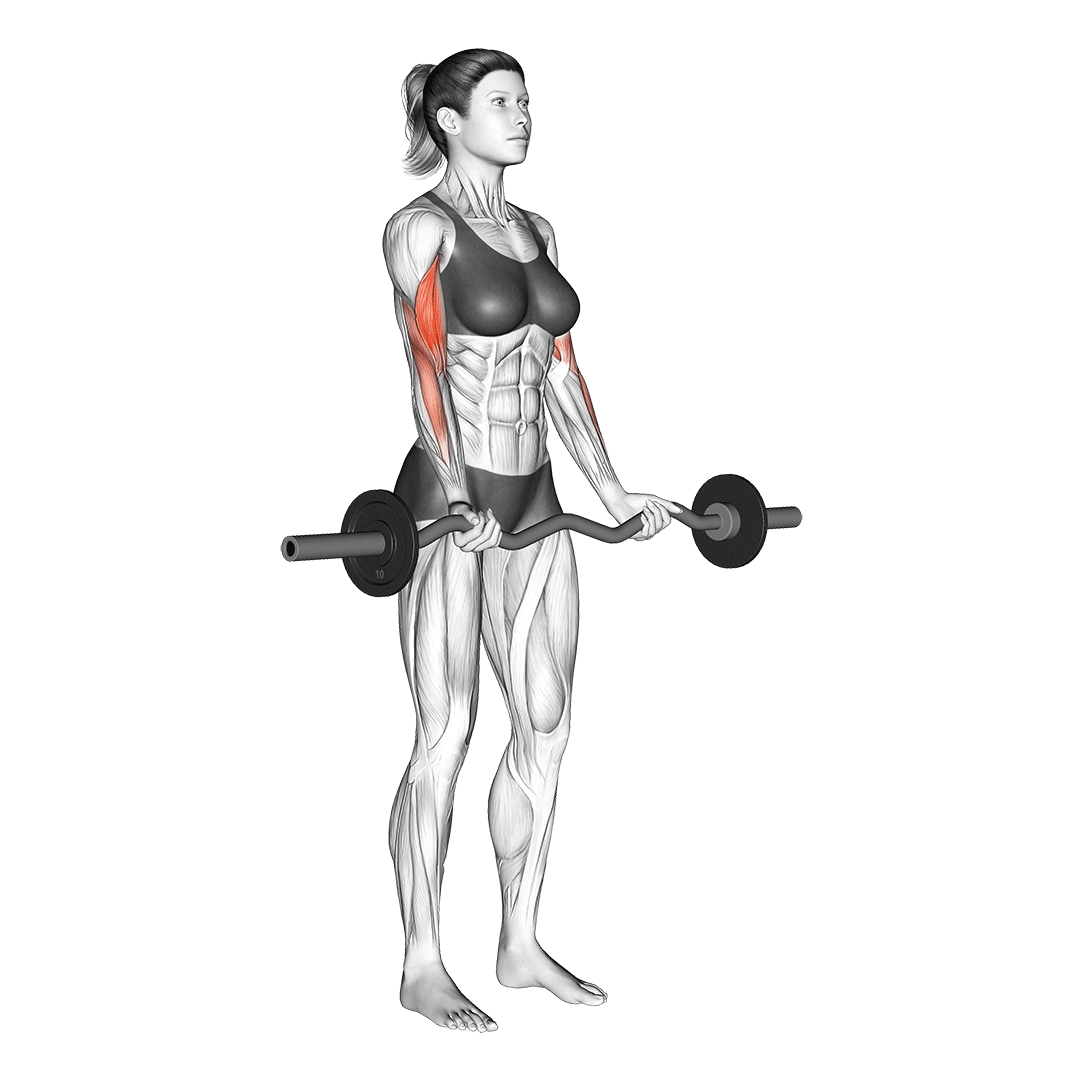
Mechanically, the EZ-bar curl is practically the same as the straight barbell curl - only with the hands and wrists in a more natural position, reducing strain placed on the forearms and wrists and allowing for a somewhat larger range of motion to be taken advantage of.
Benefits of the EZ-Bar Bicep Curl
The EZ-bar curl is one of the lowest impact bicep exercises available, and features a greatly reduced risk of injury in comparison to most other free weight bicep exercises.
Much like its straight bar counterpart, the EZ-bar bicep curl is quite simple and nearly mechanically identical to the standard dumbbell bicep curl, meaning that it is quite compatible with the training programs of novice level lifters.
Equipment Used
The EZ-bar bicep curl requires an EZ-bar curl barbell and a set of weight plates. Barbell collars may also prove useful.
Important Points
Like most other bicep curl exercises, it is important to perform the EZ-bar curl with the elbows and upper arms relatively stationary. This is made easier by the neutral position of the wrists, which should allow lifters to keep the forearms the sole moving part - even for those who have trouble doing so with a straight barbell curl.
Furthermore, the majority of EZ-bars will feature two areas with which the lifter can grip. Performing the exercise with the inner handles allows for greater recruitment of the long head of the biceps, if so desired.
3. The Parallel Bar Hammer Curl
For lifters seeking a barbell-based variant of the hammer curl, a specially made barbell known as the olympic parallel bar may be used.
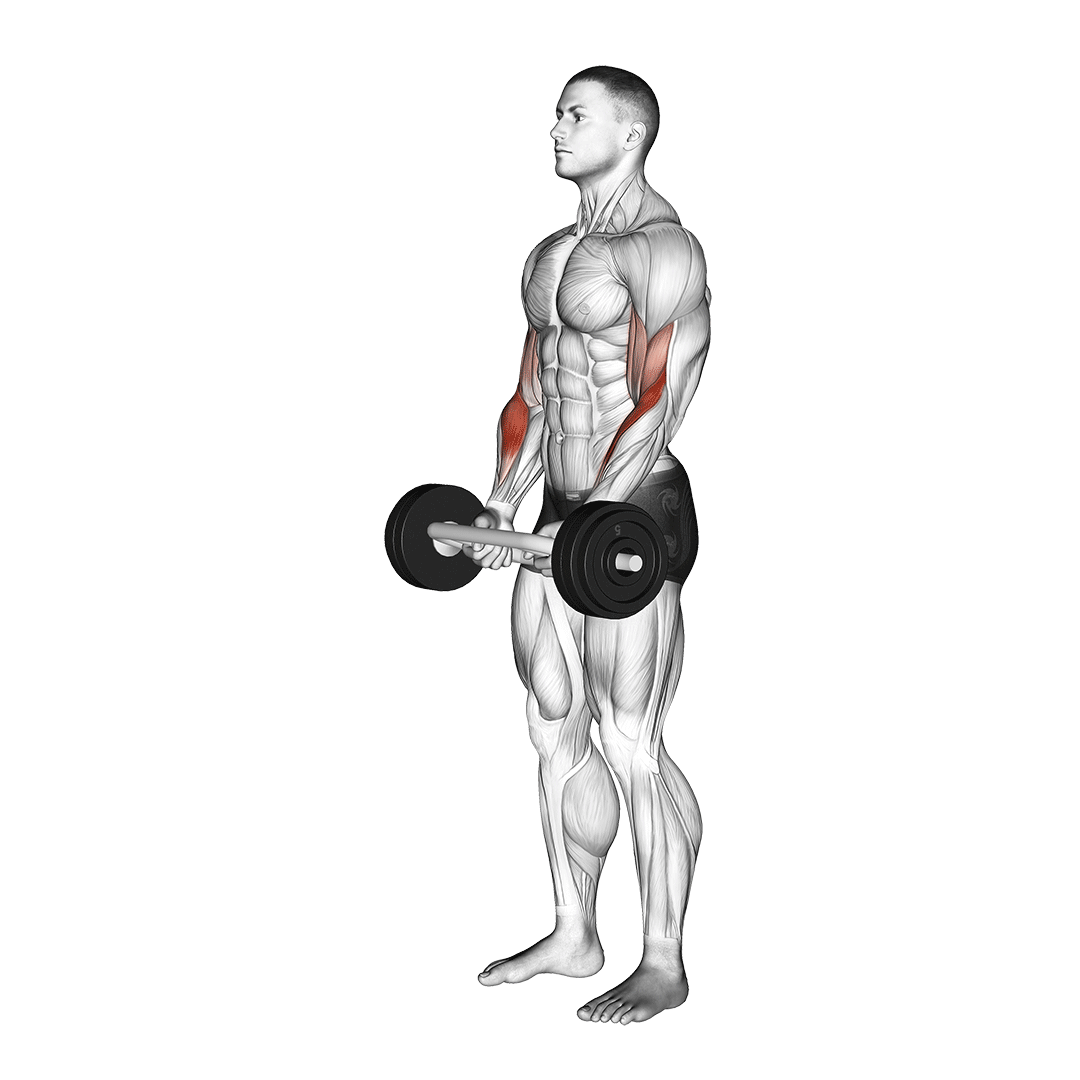
This barbell features two handles placed horizontally between a circular frame, allowing for a neutral grip to be used as the exerciser performs the movement in much the same way as a hammer curl.
Because of the similar stance and execution of the parallel bar hammer curl and the dumbbell hammer curl, they will both train the brachialis and brachioradialis alongside the biceps - making this particular movement a compound one.
Benefits of the Parallel Bar Hammer Curl
For lifters seeking thicker and more stable arms alongside the benefits of proper biceps training, there are few exercises as effective as the hammer curl - and the barbell variation is no exception.
Furthermore, if an exerciser still experiences wrist pain during barbell curls, even if they have tried EZ-bar curls, then switching to the neutral-grip hammer curls may be a solution to their issue.
Equipment Used
The parallel bar hammer curl will use an olympic parallel bar (also known as a tricep bar or hammer curl bar), as well as a set of weight plates.
Important Points
The benefits of the parallel bar hammer curl are much the same as those of any other hammer curl variation - recruitment of the forearms and brachialis muscles alongside the biceps, leading to a thicker and stronger arm overall.
As the three main muscles trained by the parallel bar hammer curl are all elbow flexors, subsequent reinforcement of the biomechanic is also another benefit that may be received.
4. The Reverse Barbell Curl
A barbell bicep curl performed with the hands in a pronated grip, the reverse barbell curl engages other nearby muscle groups like the brachialis and the forearm flexors alongside the biceps - making it a compound exercise.
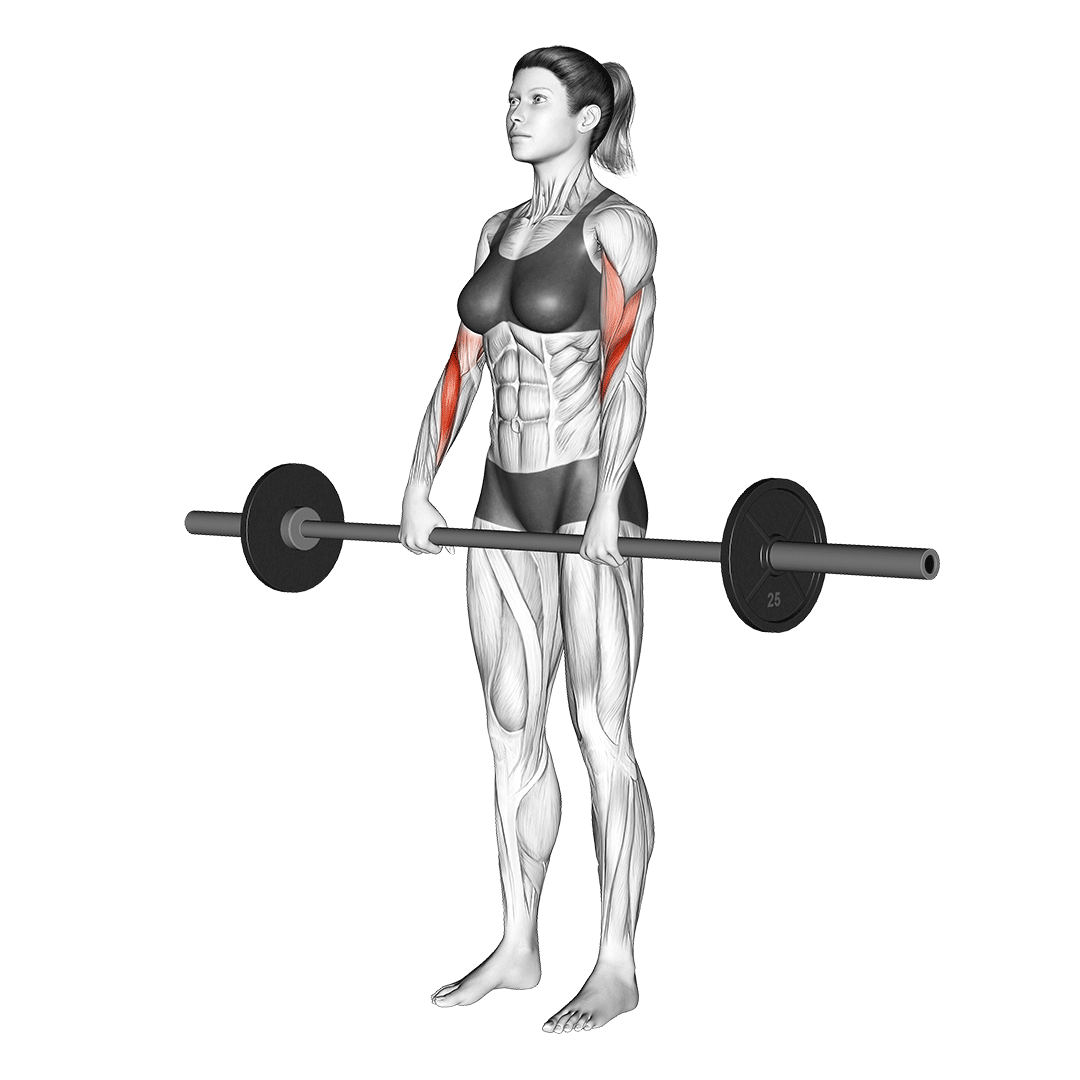
Though the reverse barbell curl may reduce recruitment of the biceps somewhat, they make up for it by training the majority of the arm (excluding the triceps) to a greater degree, improving elbow flexion stability and strength alongside the dynamic strength of the forearms.
Benefits of the Reverse Barbell Curl
The reverse barbell curl engages the forearms and brachialis alongside the biceps, creating a thicker and more stable arm - as well as improving the grip strength of the lifter.
Alongside this, there is a reduced risk of “cheating” the repetition due to the position of the forearms relative to the shoulders - meaning that novices or individuals unfamiliar with the bicep curl may see less movement of the elbows and upper arm.
Equipment Used
The reverse barbell curl will only require a straight barbell and a set of weight plates, though they may also be performed with an EZ-bar with some slight variation in muscular recruitment.
Important Points
Despite the pronated grip, the elbows and upper arms should still stay relatively in-place at the sides of the torso so as to avoid sabotaging the exercise.
Furthermore, it is especially important to maintain neutral wrist rotation when performing this exercise, as bending the hands to either side while in a pronated position can cause the wrists and elbows to bear significant tension.
5. The Barbell/EZ-Bar Preacher Curl
Whether with the use of an EZ-bar or straight barbell, a barbell-based preacher curl is one of the most effective biceps isolation exercises possible.
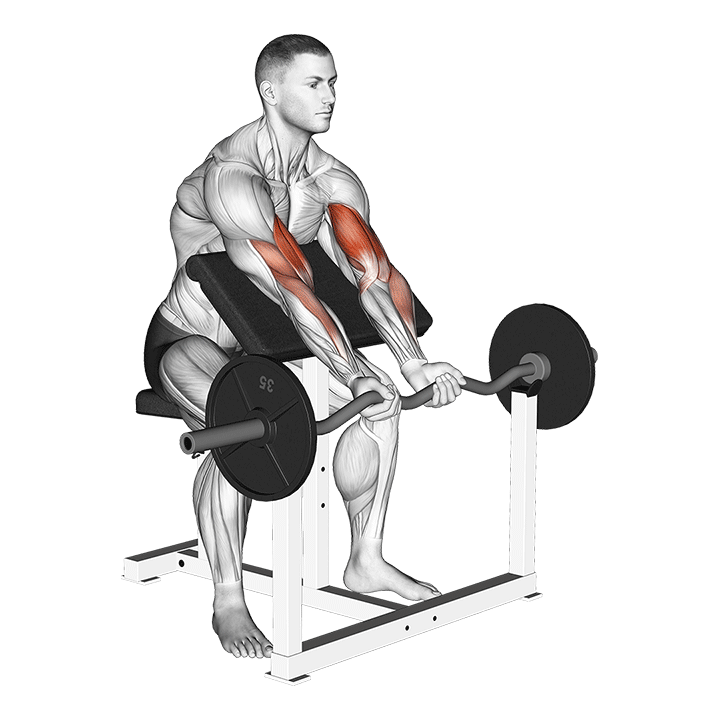
Not only is the lifter taking full advantage of the additional maximum load from bilateral contraction, but they are also maximizing the range of motion of the biceps, as well as lengthening the time under tension.
Each of these factors equates to a barbell preacher curl adding mass and strength to the biceps to great effect.
Benefits of the Preacher Curl
The barbell preacher curl is arguably one of the most effective exercises for building the biceps - but also a somewhat dangerous one, if performed incorrectly.
With a larger range of motion and longer time under tension than most bicep isolation exercises, the barbell preacher curl will often work the biceps to a far greater degree.
Furthermore, the position in which the preacher curl places the lifter will reduce any risk of poor form or cheating of the repetition - ensuring proper form is followed and that the biceps alone are worked by the exercise.
Equipment Used
The barbell preacher curl will require a straight barbell or EZ-bar, a preacher bench, as well as a set of weight plates.
Important Points
Much like any other form of preacher curl, the barbell preacher curl should be performed slowly, with a focus on quality rather than quantity. It can be quite easy to damage the biceps when working with the weight of a barbell in such a position.
In addition, ensure that the upper arms remain touching the slanted pad of the preacher bench as much as possible, as any movement of the upper arms or torso can affect what muscles are involved in the exercise.
6. The Barbell Cheat Curl
As infamous as it is complex, the barbell cheat curl is a bicep curl variation with a poor reputation and moderate risk of injury due to the manner in which it is performed.
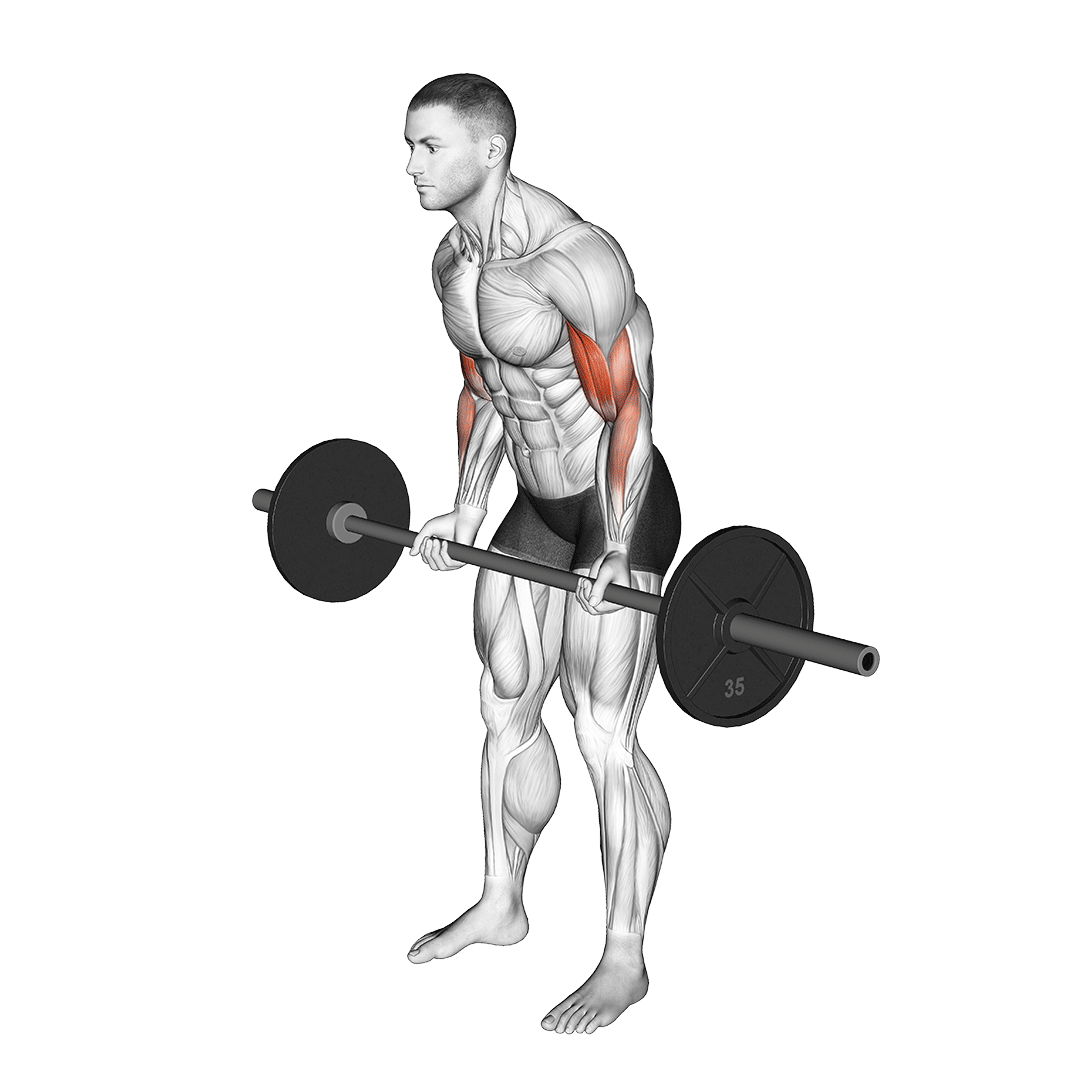
Essentially, the barbell cheat curl is a standard barbell bicep curl with excessive weight loaded onto the bar - meaning that the lifter must “cheat” or otherwise use momentum and muscles other than the biceps to lift the bar.
Performing this particular exercise is not advisable for novice lifters or individuals with a history of bicep, wrist, back or shoulder injuries.
Benefits of "Cheating" the Curl
The barbell cheat curl takes the comparative benefits of barbell-based bicep exercises to an extreme - allowing loading and contraction that is not otherwise possible with any other sort of equipment.
Not only does the cheat curl allow the lifter to lift an amount of weight that they would not be able to with strict form, but it will also help build upper-body power and explosiveness due to the manner in which the lifter is meant to jerk the weight upwards.
Equipment Used
The barbell cheat curl will only require a barbell and set of weight plates. Barbell collars are advisable due to the momentum used in the exercise.
Important Points
Though a set of cheat curls will begin with strict form at first, the amount of weight will require the lifter to break from strict curl form and utilize swinging and momentum near the end of the set.
To do this properly, avoid using the elbows or wrists. Instead, the swinging should take place from the shoulders and upper back, involving the larger (and more durable) portions of the upper body.
Furthermore - to retain the purpose of the exercise, the lifter should focus on maintaining a supinated grip throughout the exercise. The core should remain tight, the negative should be controlled, and the elbows should nonetheless remain in a fixed position at the sides throughout the range of motion.
In Conclusion
Remember that just because an exercise is not a biceps isolation movement, it does not mean that the biceps are not involved at all. Other barbell-based movements like rows - or even bodyweight movements like pull-ups - can involve the biceps, though often to a less targeted degree.
References:
1. Wider, Joe. (1983) “Building Arms for Mass and Power” Contemporary Books. ISBN: 0809255006, 9780809255009 Retrieved via Google Books on 03/02/2023
2. Schwarznegger, Arnold. Dobbins, Bill. (Nov 5, 1999) “The New Encyclopedia of Modern Bodybuilding : The Bible of Bodybuilding, Fully Updated and Revised EBook Edition” Simon and Schuster Publishing ISBN-10: 3200328452
